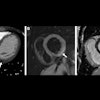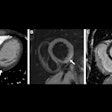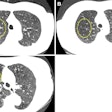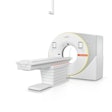In young patients undergoing urograms after a finding of asymptomatic hematuria, it may not be necessary to perform contrast-enhanced CT, as a noncontrast scan may be sufficient, researchers suggested at last week's RSNA meeting.
"Contrast-enhanced sequences added no additional diagnostic benefit in evaluating the upper tracts of 193 adults under the age of 40 with asymptomatic microscopic hematuria," said Dr. Thomas Toffoli, an internist at the San Antonio Military Medical Center.
All of the significant or life-threatening abnormalities in the 193 patients in the study were visualized with noncontrast CT, he said.
Toffoli and colleagues retrospectively evaluated CT urograms performed between January 2007 and March 2012 in patients younger than 40. They also reviewed the patients' urinalysis results and medical history. They included patients who had no significant urologic disease except for stones and had microscopic nonsignificant hematuria, defined as a urinalysis that found from three to 50 red blood cells per high-powered field.
The researchers narrowed their population to 100 men and 93 women, all between the ages of 18 to 39, who underwent 196 examinations based on microscopic hematuria. Toffoli estimated that the patients had a median age in the 20s.
Findings in the upper and lower urinary tract were classified as life-threatening, significant requiring treatment, significant requiring follow-up, and clinically insignificant. All clinically significant findings were then reviewed on noncontrast CT.
"Imaging evaluation of microscopic hematuria frequently includes multiphase CT," Toffoli said in his presentation. "The prevalence of significant upper tract disease in young adults with asymptomatic microscopic hematuria is very low. The basic question we wanted to ask was: Do the contrast-enhanced phases of CT add diagnostic value in the evaluation of microscopic hematuria in asymptomatic patients under the age of 40?"
They found one life-threatening event: a bladder neoplasm of low malignant potential. Meanwhile, 33 significant findings -- 32 renal calculi and one ureteral calculus -- requiring treatment were observed. Five findings requiring follow-up were reported: one case of adult polycystic kidney disease and four cases of medullary sponge kidney. Clinically insignificant findings included 37 renal cysts and four other conditions.
"Of the clinically significant upper tract conditions, all were visualized on noncontrast CT -- a sensitivity of 100%," Toffoli said. "The probability of missing life-threatening upper tract disease -- none of which were seen in this series -- by not using contrast imaging was calculated to be 0% to 2.3%."
The clinical implication is that radiologists can completely eliminate the need for contrast agents for this application. Using only noncontrast scans can reduce radiation and eliminate contrast risk, with at most a 2.3% risk of missing a significant upper tract finding in young adults with asymptomatic nonsignificant microscopic hematuria.
Session co-moderator Dr. Matthew Davenport, assistant professor of radiology at the University of Michigan, was skeptical that physicians would change their behavior, in spite of the findings.
"There have been several studies that have suggested similar findings, but I tell you that clinicians still want to do those contrast studies," Davenport said. "I don't see that changing right away."



















